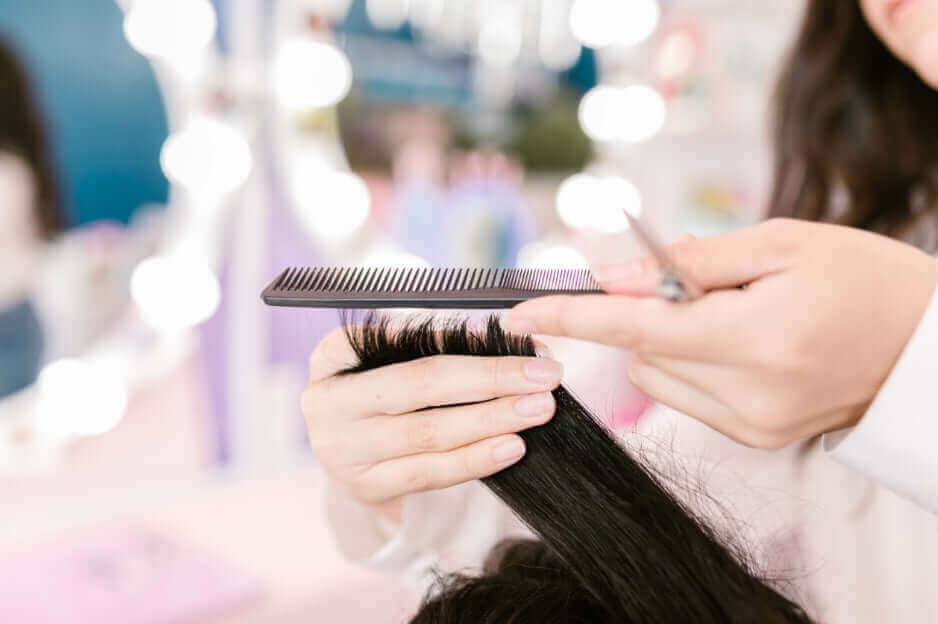Dry Cutting vs Wet Cutting: A Hairdresser’s Guide to Getting It Right

When it comes to haircutting techniques, one of the most frequently asked questions by both new stylists and seasoned professionals is: Should you cut hair wet or dry? Each method has its advantages, and the choice often depends on the hair type, desired style, and your personal technique as a stylist. In this blog, we’ll explore the pros and cons of wet vs dry hair cutting to help you deliver the best results for your clients.
✂️ Wet Hair Cutting: The Traditional Method
✅ Pros of Cutting Hair Wet
-
Precision & Clean Lines
Cutting hair when it’s wet allows for more precise sectioning and smoother scissor movement. It’s ideal for creating clean, strong shapes like blunt bobs or one-length styles. -
Better Control on Thick or Curly Hair
Wetting hair helps control volume and frizz, making it easier to handle thick or curly textures. -
Great for Texturizing & Layering
It’s easier to blend layers and remove weight when hair is damp, especially with traditional layering techniques. -
Faster for Longer Cuts
If you’re doing a major length cut, wet hair tends to stay in place better and can speed up the process.
❌ Cons of Cutting Hair Wet
-
Shrinkage Surprise
Curly or wavy hair can shrink significantly when it dries, which can lead to unexpected results if you’re not accounting for the curl pattern. -
Less Accurate for Final Shape
Since wet hair looks and behaves differently than dry hair, you might not see the true shape of the haircut until the client is dry and styled.
✂️ Dry Hair Cutting: The Modern Technique
✅ Pros of Cutting Hair Dry
-
See the Final Shape in Real Time
Dry cutting gives you a more accurate visual of how the hair will fall naturally. It’s perfect for detailed work, face-framing layers, or refining the shape of a style. -
Ideal for Fine or Straight Hair
Dry cutting allows you to see weight distribution and avoid over-removing hair, especially important for clients with thin or fine hair. -
Customized to Natural Texture
With dry cutting, you can shape hair based on how it naturally lives—great for enhancing waves, curls, or even cowlicks. -
No Surprises for the Client
Your client sees their cut evolve in real time, which builds trust and satisfaction.
❌ Cons of Cutting Hair Dry
-
Takes More Time
Dry cutting can be more meticulous and time-consuming, especially if you need to wash, blow dry, and then cut. -
Not Ideal for Big Changes
If your client wants to go from long to short, wet cutting is typically more efficient for removing bulk first. -
Can Be Tricky with Very Thick Hair
Dry cutting thick hair can create uneven tension and fatigue your hands faster, especially without the right shears.
So, Wet or Dry? What’s the Best Choice?
The best haircutting technique depends on the client’s hair type, their desired look, and your own cutting style. Many modern stylists use a hybrid approach, starting with a wet cut to shape and remove bulk, then finishing dry to detail and refine.
👉 Pro Tip: Always communicate with your client about their hair goals and texture before deciding. A personalized approach leads to better results—and happier clients.
Tools Matter Too: Use the Right Shears for Each Technique
Whether you’re cutting wet or dry, using high-quality hair cutting scissors is essential. Dry cutting often requires sharper, convex edge scissors designed to glide through hair with minimal resistance. Wet cutting shears are built for precision and clean lines.
Check out our premium collection of wet and dry cutting scissors—trusted by professional barbers and stylists across the country.
If you enjoyed this article, follow us for more pro tips for barbers and hairdressers, gear reviews, and technique tutorials to sharpen your skills—literally.




